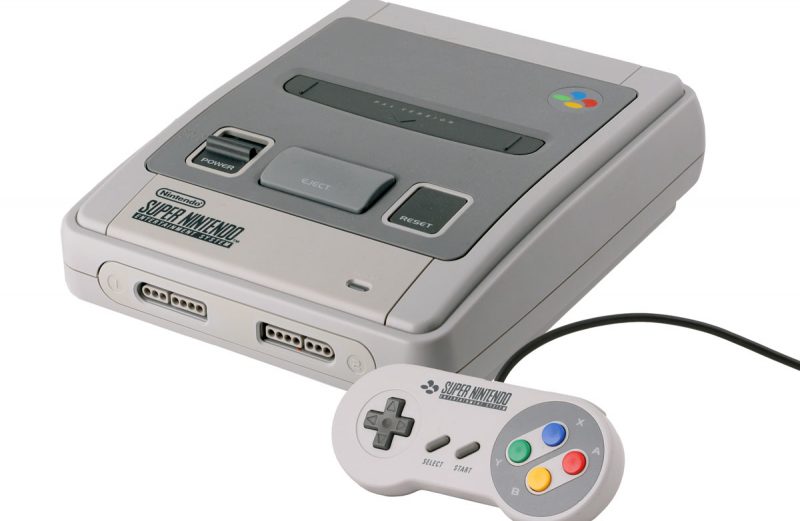Picture this: A 6-8-year-old boy, a few weeks deep into his long-awaited summer holiday, is sat on his stairwell fervently waiting for the doorbell to ring. The sun is screaming through the front door’s windowpane as his friends giggle and canter beyond it, full of ice creams and fizzy pop.
That boy was me on the day my Super NES was due to arrive into my possession. I had done it. I had finally made it into the halls of a few of my peers who had already been long venturing into the world of Super Mario and awkwardly squeezing their itchy Chrono Trigger-s.
When it did finally arrive — somewhere close to 6pm — I couldn’t even open the bloody thing, as stipulated by my mother. She wanted to be there to make sure everything was intact, lest I come tearing in, sweat addled and wild eyed, and break something in honest excitement.
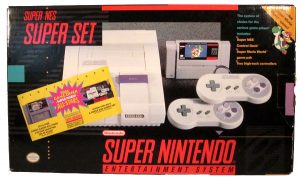
But that was fine, you know. It’s just sat there alone in its big-ass parcel. It’s fine, it’s all good. I’m calm, I can wait.
But when I finally did get to unlock the treasure which lay upon those weird Styrofoam puffs that look like grey Cheetos — and don’t taste anywhere as entertaining — a wild Super Mario All-Stars and Super Metroid were bundled with the SNES’ 16-bit beauty. That was the first time I truly sampled the majesty that is the Super Nintendo Entertainment System, and its effect has never dwindled since.
The same effect that is sending the raucous surrounding the SNES’ second coming into fever pitch: the SNES is a damn good console, and for numerous reasons. First, let’s start with a little history.
Once Upon A Time
It’s 1990, and Sega, drunk off the successes of its Master Systems and Mega Drives (Genesis), were chomping like Pac-Man into Nintendo’s territory and the share of the market the NES managed to forcefully carve itself. Everyone’s older siblings and cousins had one and the rest of us, still lavishing within the caress of the NES, the aforementioned Master System and the host of consoles launched at us during console gaming’s third generation, were jealous. It’s fine to say it! The few milk teeth left dangling in my mouth were grinding with envy whilst imagining playing Golden Axe and/or Alien Storm in my bedroom.
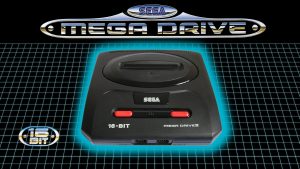
But even though Sega’s heavy hitters and the sheer ‘tude that sprung forth from every edgy crevice boded well with the teens and young adults of the era, you could pretty much go into any arcade and play a fair few of their marquee titles. So… it’s dope having the games at home and all, but there wasn’t much exclusivity attached with the Sega era of arcade emulation, barring a few games here and there.
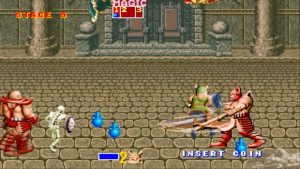
At first Nintendo wasn’t too keen on heading back into the market with a new console, but after watching a significant chunk of their market disappear into the distance like Sonic’s dust trails, thankfully they thought again. Better late than never, right? So along came 1990. Nintendo releases its magnum opus and it started off slow, eventually picking up speed alongside the Mega Drive (Genesis) and eventually went on to win the fourth generation of video game consoles, sparking the console war we know and love so well. How did they do that, especially with the Mega Drive being easier to develop for?
The Power of Pixels
Mode 7
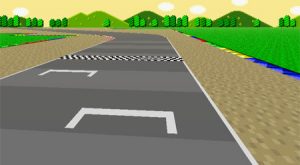
The SNES has eight different graphics modes, meaning it has eight different ways of rendering animations on screen. The most famous being Mode 7, better known for its ever twisting and scaling elements in games such as F-Zero, Super Mario Kart, Super Castlevania IV and Chrono Trigger – to name but a few. Mode 7’s (now) retro-futuristic alchemy offered SNES games perspective effects and a depth of field that was unparalleled at the time. Basically, the SNES could boost an image to 128×128 pixels with 256 colours. The mind boggles at the thought of all the maths that went into that. This breakthrough meant game worlds could become bigger and more accessible, and even allowed for the backgrounds in stages to become more detailed, animated and some elements of the background could be placed in front of sprites! Amazing, right?
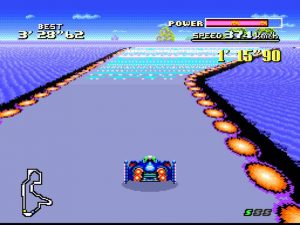
But, naturally, as with anything, Mode 7 has its caveats. And this comes in the shape of a significant lack of scalable sprites. Using F-Zero as an example again, not just because I love that game with an unwavering passion, games utilising Mode 7 had different sizes of sprites to create the illusion of distance. This means when overtaken in F-Zero, the vehicle zooming past you will pop into smaller sizes, unlike today’s smooth scaling of objects at varying distances.
Super FX Chip
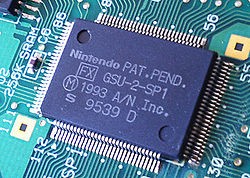
Sometimes, when I’m in the shower, I ponder how the SNES managed to stay afloat during the 32-bit era. Well that was basically thanks to the revolutionary Super FX Chip, created by a little-known studio called Argonaut Games, who just happened to make a little-known title named Star Fox. You might have heard of it.
Whilst Star Fox was in development, the then CEO of Argonaut Games, Jez San, was discussing how to make the title really hit home with gamers. Argonaut wanted to take Star Fox into the realm of 3D rendering, a task believed to be impossible at the time. Nintendo agreed — probably because they got to keep the rights — and San and a host of other supremely talented engineers at the dev studio set about creating the Super FX Chip – which was then known as the romantically designated “Mathematical, Argonaut, Rotation & Input/Output”chip, or M.A.R.I.O. for short. Get it?
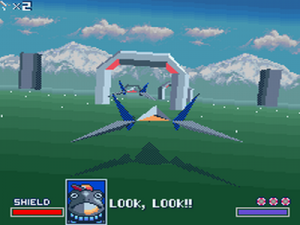
The custom R.I.S.C. processor was utilised to render 3D polygons and rather advanced 2D effects that allowed titles like Donkey Kong Country, Doom, Super Mario World 2: Yoshi’s Island and Star Fox to really blow the mind from our bones.
An Encyclopaedic Library of Fun
Besides having some of the best-looking video games of all time, the SNES also has a strong case for housing a troupe of the best video games ever made, full stop. Constantly appearing in best-of lists across the web and casual conversation with friends, the SNES has hits like Super Mario World, Earthbound, The Legend of Zelda: A Link to the Past, Secret of Mana, Chrono Trigger, Super Metroid and Final Fantasy VI (or Final Fantasy III to some) to further cement its place in video game’s hall of fame territory.
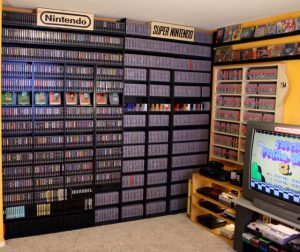
But, as with any other console, the SNES harbours a number of underrated gems and games you totally forgot existed or that you owned at one point in time. Uniracers for example, developed by DMA Design – who would later go on to create Grand Theft Auto – is an incredible title where you race and trick the heck out of a unicycle across varying tough and twisty courses.
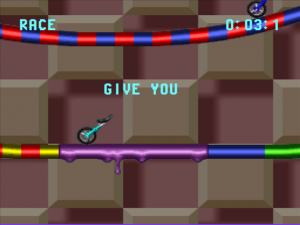
The Adventures of Batman and Robin is the Batman: The Animated Series game we deserve, with its badass sound effects and great graphics. Jurassic Park, and the way it shifts from top-down to first-person perspective when you enter buildings, was mind blowing. As is the unashamedly 90s action that Rare’s Killer Instinct offers by the tonne. And that’s just a few of the 700+ games that released on SNES in North America alone, or the 500+ released in Europe.
Like A Phoenix
The SNES, once again, has vaulted itself into the hearts of gamers across the world, thanks to its reissuing as SNES Classic Mini, a miniaturised version of the seminal console. Gamers that had sold or misplaced their SNES’ will once more be able to play at least a couple of their favourite games. Kids can learn about one of the most important and captivating moments in video game history, and even nana and grandpa can come along for the fun!
The SNES is a console that shouldn’t be missed and must be played to be understood. I think back to that little 6-8-year old kid, sat impatiently on his carpeted stairwell waiting for his life, unbeknownst to him, to be changed completely, and I smile. Who says you can’t live out your childhood twice?

